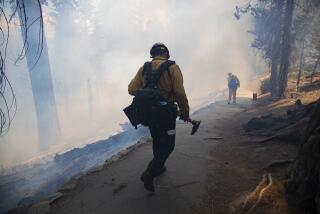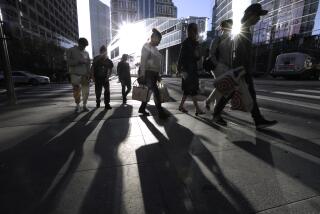Going to Plan B after an attack has its limits
- Share via
WASHINGTON — Somewhere on Long Island, in an undisclosed location, sits a replica of the trading floor of the New York Mercantile Exchange.
Except that this one is eerily silent.
Here, in this 46,000-square-foot site in Nassau County, with tiered trading pits for crude oil, natural gas, gold, silver and other commodities, the engines of capitalism will continue thrumming if a catastrophe should shutter lower Manhattan.
Six years after terrorists attacked New York and the Pentagon, this duplicate of the world’s largest energy marketplace is the paradigm for disaster preparedness. The post-9/11 idea is to go beyond gates, guards and guns to create resiliency through redundancy and geographic dispersal -- including alternative sites, backup data centers and contingency plans.
But how far is far enough? And how much redundancy is sufficient to protect against hackers, hurricanes and global health crises, as well as terrorists? The answers seem straightforward if a truck bomb were to explode in lower Manhattan. But what if a nuclear device were to be detonated? Or if a flu pandemic hit? Experts say that such scenarios bedevil businesses, regulators and domestic security officials as they plan for the next Big One.
The 9/11 attacks “redefined plausibility,” Rand Corp. senior analyst Brian Jenkins said. “Scenarios that were dismissed as farfetched in the days before 9/11 became operative presumptions the day after. And so when you talk about preparedness, in a sense, there was virtually nothing that could be excluded.”
Organizations like the Mercantile Exchange learned that lesson the hard way. After 9/11, its headquarters in Battery Park City were closed for four days, while its backup site, directly across from the World Trade Center, was rendered inoperable. Besides the cost of physical recovery, the exchange incurred millions in lost business.
After renting temporary backup space in Weehawken, N.J., corporate officials decided to invest $12 million in a leased site in Nassau County -- not just for a permanent backup center but for a trading floor it hoped it would never use. The site relies on different power, water and communications grids and is an easy commute for most traders. Officials declined to give specifics, citing security concerns.
Only a few major financial players, such as Citigroup, have followed that path. Real estate experts say the stumbling block has been geography more than cost. As a coastal area, much of Long Island is vulnerable to severe weather, especially with above-ground power lines and communications systems routed through Manhattan.
“After 9/11, we were all waiting for the moving vans to come across the 59th Street bridge” to set up secondary sites on Long Island, said Brian D. Lee, executive managing director of Newmark Knight Frank, a commercial real estate services company based in Melville. “But there were very few.”
Manhattan, meanwhile, fared better post-9/11 than many expected.
After the attacks, Jenkins said, business consultants “were taking maps of Manhattan and drawing . . . [rings] around the major icons” to see how many corporate headquarters would fall if, say, a one-kiloton nuclear bomb were set off. Afterward, many companies set up alternative sites in northern New Jersey and Westchester County.
Over time, however, officials concluded that the benefits of geographic concentration, especially near so many global players in lower Manhattan, outweighed the risks.
In October 2003, the Securities and Exchange Commission recommended that secondary sites be located on different grids for power, transportation and communications -- with no mileage guideline at all.
But some wonder whether those requirements are tough enough.
A March report by the Government Accountability Office, the investigative arm of Congress, said that despite progress on geographic dispersal of operations, “trading activities remain vulnerable to disruption because all key trading staff are still concentrated in one geographic area.”
In particular, questions about how Wall Street would function in a pandemic, with likely quarantines and shuttered transportation, are drawing fresh attention. More than 1,600 financial companies are taking part in a three-week flu pandemic simulation to test contingency plans.
“The intent is to understand what will happen to the markets and the financial infrastructure if a pandemic does hit in a severe way,” said Howard Sprow of the Securities Industry and Financial Management Assn.
Sprow and others contend that such exercises testify to the extraordinary planning that continues in the face of ever-changing threats.
“That’s the most difficult part of this job -- balancing the trade-off between risk and the cost of mitigating that risk,” said Andrew Bach, vice president of communications architecture for the New York Stock Exchange, which has added several sites since 9/11.
“You could add 1,000 new data backup centers,” Bach said, “but how much new risk have you mitigated? . . . . Are we going to design our systems for the day an asteroid strikes?”
More to Read
Inside the business of entertainment
The Wide Shot brings you news, analysis and insights on everything from streaming wars to production — and what it all means for the future.
You may occasionally receive promotional content from the Los Angeles Times.










